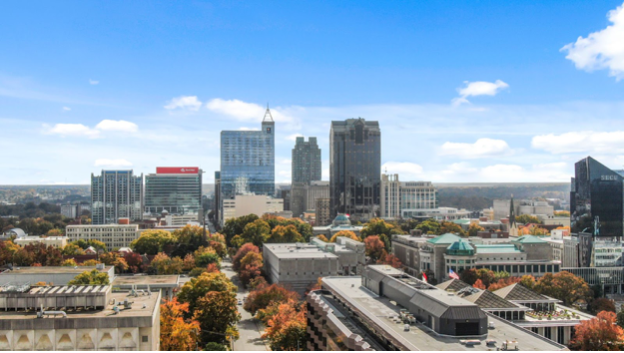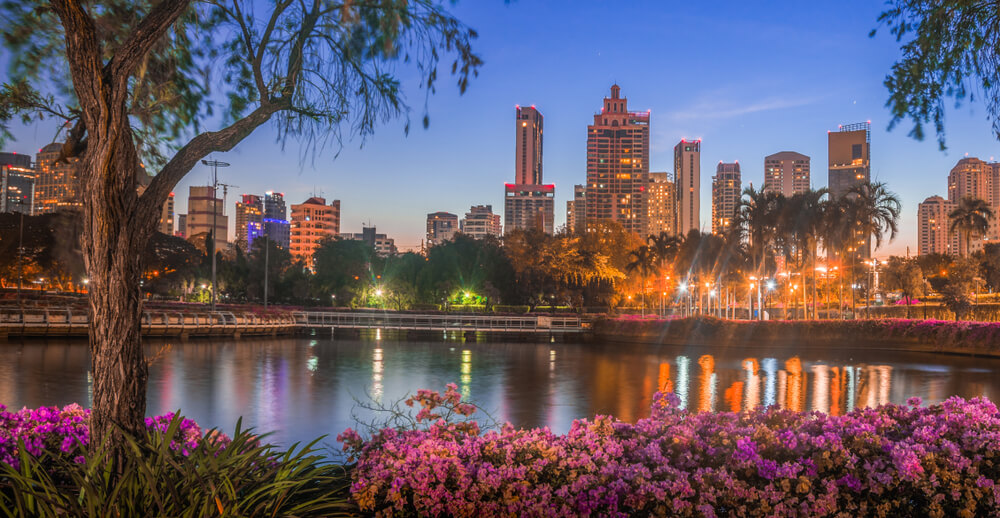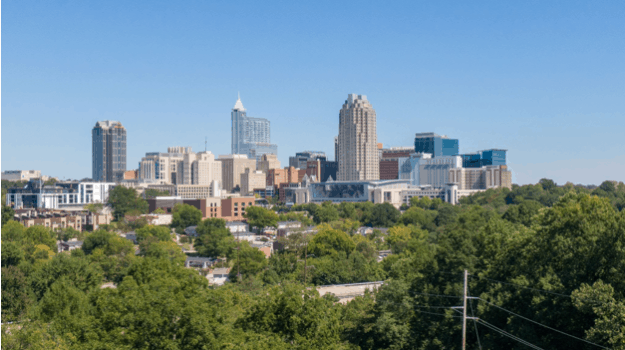Early Raleigh History
The city of Raleigh was not originally the city of Raleigh at all. Instead, the area was a part of Wake County and was made up of several small trading posts and townships. It was not until the land was officially purchased and the intent to declare the area a state capital made known that Raleigh as it is now known came to be.
Early Colony and Establishment
The state of North Carolina was already well established and organized prior to the settlement and establishment of Raleigh, North Carolina. The area was designated the state capital not as a result of a particular surge of commerce or growth, but because of the literal geographical location of Raleigh. As a solid middle point in the state, it was determined that the Raleigh area was ideal in order to establish a consistent and reliable location for the seat of state government.
Although present-day Raleigh has had its name since 1792, the area was not always united under a single banner. Raleigh is named for Sir Walter Raleigh but was initially several different small settlements and communities. These communities were combined to establish the capital city, and the state of North Carolina was officially established as a cohesive unit under the leadership contained within a single city.
“A City of Streets”
Initially, Raleigh was known as the “city of streets” because the area was filled with sprawling streets along a strict grid but no houses. Rather than being an area filled to the brim with bustling, thriving homes and families, Raleigh was instead initially far more of a commercial hot spot than a place to call home. As commerce in Raleigh grew, however, the city began to fill out and was no longer the “city of streets” it was once termed.
The Advent of the Railroad
As is the case with countless cities and counties in the South, the railroad brought even more commerce and growth to Raleigh. What is now downtown Raleigh was already a thriving area for local businesses. When the railroad came to town, however, it connected Raleigh to the most significant supply hub in Virginia, bringing a vastly superior range of goods to the area. With increased access to goods, the Raleigh area began to grow in earnest.
Raleigh and the Civil War
In a move that has long been considered unusual or uncommon, the Union-leaning state of North Carolina voted to secede from the United States. After the area was effectively occupied by Union soldiers, North Carolina officially surrendered and began rebuilding what had been lost in its secession. Because leadership surrendered quickly, Raleigh did not experience a great deal of damage and upheaval in the wake of the confederate’s losses.
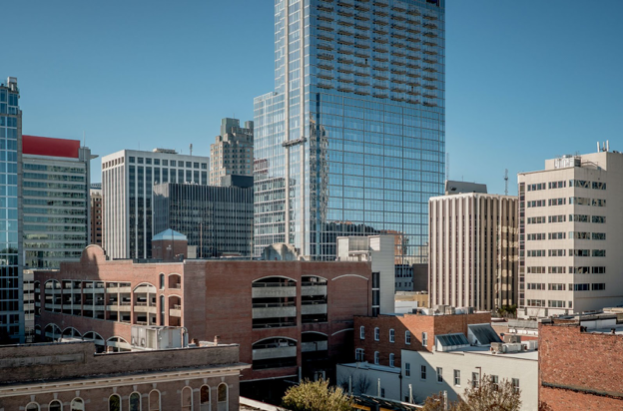
Late 1800s and Economic Growth
At the conclusion of the Civil War, Raleigh experienced a consistent upward trend in growth. Along Fayetteville Street–a street still standing today–Raleigh enjoyed a large number of shops and businesses. These shops and businesses eventually formed the backbone of commerce and economic development in the city.
Printing and Publishing
Raleigh began to be known as something of a cultural mecca in the American South when it became a hub for publishing and printing. It was during this time that Raleigh truly solidified its reputation as an important city for the South’s educational and cultural development. From there, Raleigh continued to develop its educational and cultural roots.
Retail and Entertainment
Retail forms the basis for the entire city of Raleigh; Joel Lane’s trading post and land formed the backbone for the development of Raleigh’s city center. Economic growth via additional shops and goods and services brought in by the railroad further drove the development of Raleigh. To this day, Raleigh is considered a valuable spot for ongoing retail shopping and even local shops and goods.
Entertainment is also an important part of modern and historical Raleigh culture. The city is home to standard accouterments found in most major cities, such as a theatre and parks that are able to host festivals and musical guests. It is also home to the North Carolina Museum of Art and a truly enormous host of other museums designed to interest and excite the young and old.
Education
Raleigh has been likened to New York and other large hubs of information and culture in the United States because it possesses a great deal of museums, colleges, and other sources of education and cultural enrichment. From Raleigh’s many art museums to its North Carolina Museum of Natural Sciences, Raleigh is known for its devotion to maintaining and supporting culture, education, and heritage. North Carolina State University has been in operation since the late 1800s and remains the largest university in North Carolina.
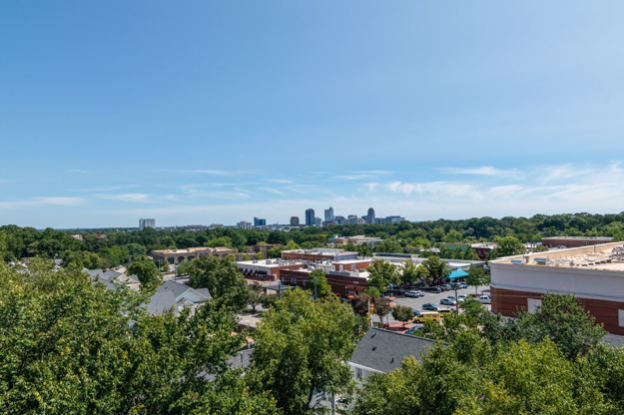
Diversity in Raleigh’s History
Raleigh possesses many diverse sites and spaces that exemplify the storied history of the American South. Raleigh was once considered a prime space to live for freed slaves because a portion of the city was devoted to primarily black communities. These communities eventually gave way to the historic Black colleges that still stand today, including Shaw University and St. Augustine College.
Education and Historical Sites
In addition to the two historically Black colleges native to Raleigh, there is a wealth of historical sites that acknowledge the long and storied history of the area. Many of these sites are devoted to African American changemakers and citizens in North Carolina, including the Leonard Medical Building and the Pope House Museum.
Raleigh Memorials
Raleigh played a role in much of the civil rights movement that swelled in the 1960s in the South. The city continues to maintain memorials and monuments for its marginalized communities. The Dr. Martin Luther King Memorial Garden is the first garden dedicated to Dr. King and his contributions to the civil rights movement.
Ongoing Commitment to Culture and Growth
While education is a historically valuable asset to Raleigh, NC, the devotion to education in Raleigh continues to this day. With museums, research hubs, and universities and colleges, Raleigh is a melting pot and a prime location for continued growth and development.
Museums and Monuments
Education and growth are pivotal for people of all ages. Raleigh takes this idea seriously and provides children with child-specific museums, like the Marbles Kids Museum. Raleigh also offers a city-specific museum, a state museum, and numerous art museums. All of these museums together offer free or low-cost admission to residents and visitors.
Education and Research in Raleigh
Raleigh is considered a part of the “Research Triangle” of North Carolina, which is made up of 3 different counties that emphasize technology and innovation in their professional and educational pursuits. Joined by Durham and Chapel Hill in the Research Triangle Park, the dedication to education is famed in Raleigh. Forbes even ranked Raleigh as the second most educated city in the United States. With huge names such as IBM banked in Raleigh, Raleigh is no stranger to education and growth.
Getting to Know Raleigh, NC
While Raleigh may not immediately seem like much, the capital city of North Carolina contains a host of educational, historical, and cultural sites and offerings that are all too often unmatched in cities of the same size and area. Raleigh has been likened to much larger cities such as New York because it has such a strong tie to the past.
From the Carolina Museum of History to the plethora of historical homes preserved and shown to the public, Raleigh continually demonstrates its proficiency in education, economics, and culture. Our dental office in Raleigh, NC, is proud to call this area home!

